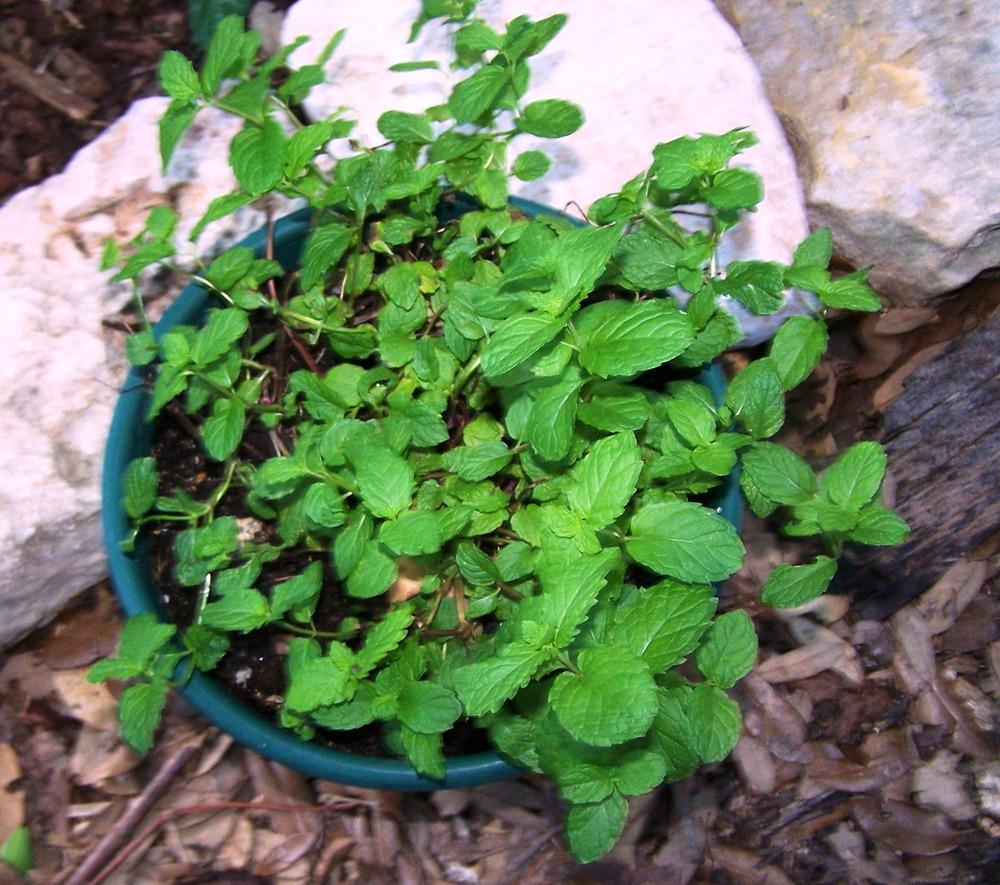The mint family offers a tremendous diversity of refreshing scents and flavors for cooking, beverages, and potpourris. Bumblebees and other pollinators are attracted to the delicate flowers that appear in mid- to late summer. Some varieties sport variegated foliage for added interest in the herb garden.

Spearmint (Mentha spicata) makes a soothing tea, and is a key ingredient in mint juleps. It's also the mint of mint jelly, and can be use to highlight flavors in a fruit salad or grain pilaf. Plants grow 2 to 3 feet tail and blossom in pale violet mid- to late summer.
Peppermint (Mentha x piperita) is more pungent than spearmint, which tends to the sweet side. Peppermint grows to 3 feet tall, bearing smooth leaves 1 to 3 inches long. But the bouquet is bigger than these two familiar flavors. In catalogs and garden centers, you can find apple mint, chocolate mint, orange mint, and many others.
Growing and Harvesting Mints
Mint can be terribly invasive, particularly in rich, moist soil. The best way to keep it in bounds is to grow it in pots. However, if you want to grow it in a bed, keep it confined with sturdy metal or plastic edging buried to a depth of 14 inches around the perimeter of the mint patch. Yes, that's 14"! Any less and the roots will find their way under the barrier.
A single plant is plenty for a container, as it will quickly spread to fill its allotted space. Choose a sunny location wi moderately fertile, humusy soil. Use a light mulch to retain moisture and keep leaves clean.
Once plants are growing vigorously, you can harvest young or mature leaves. Don't be afraid to cut the plants back frequently to promote fresh growth. Rusty spots on leaves indicate a fungal infection; pick and destroy blemished leaves and propagate new plants from uninfected cuttings to cultivate in a new location.
You can dry mint leaves on trays or by hanging bunched branches upside down in a warm, dark, well-ventilated area, such as an airy attic or outbuilding. Fresh leaves are easy to freeze too.
 Victory Seed Company has all the seeds you want for your best garden in 2024.
Victory Seed Company has all the seeds you want for your best garden in 2024.
For 25 years, the family-owned Victory Seed Company has provided the highest quality vegetable, herb and flower seeds to families across the country. We are passionate about providing you the best seeds available that give excellent germination, robust plants, and the harvest you want. With a catalog of over a thousand varieties, we have everything, and our prices are the kinds that we'd want to pay. We have hundreds of yesterday's heirloom vegetables, as well as today's award winning hybrid selections. Get to know us by visiting our website and browsing through our online vegetable seed catalog.
| 1. Growing Mint ← you're on this article right now |
| 2. Growing Chives |
| 3. Growing French Tarragon |
| 4. Growing Oregano |
| 5. Growing Marjoram |
| 6. Growing Thyme |
| 7. All About Rosemary |
| 1. Growing Mint ← you're on this article right now |
| 2. Growing Chives |
| 3. Growing French Tarragon |
| 4. Growing Oregano |
| 5. Growing Marjoram |
| 6. Growing Thyme |
| 7. All About Rosemary |